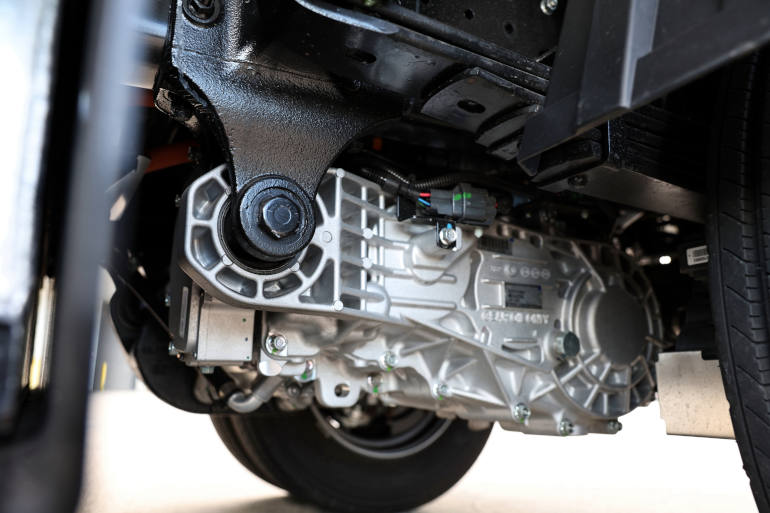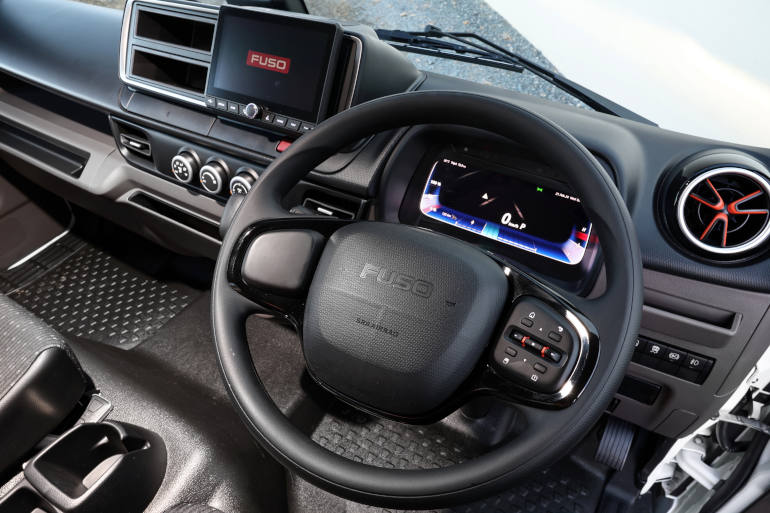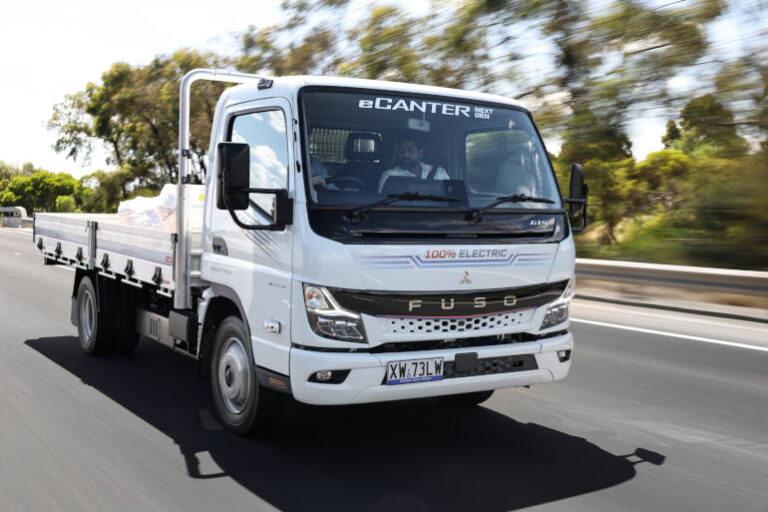Zero-emission pioneer Fuso is back with its second-generation eCanter, an electric truck that sets a new standard in the light-duty segment.
It’s a bold claim but, after driving it for a day, the Fleet HV News team were impressed by its performance, comfort and overall ability compared to equivalent diesel models.
Since launching the first generation model in 2017 Fuso claims the eCanter has amassed around eight million kilometres, a distance equivalent to travelling the circumference of Earth 200 times, providing a well-travelled test bed for its future models.
Australia didn’t receive the first eCanter until 2021, but even then it was the first production electric truck to reach our shores and offered a more refined, OEM-level product compared with converted models that followed – like the Hino-based SEA 300.
Since launching Down Under, the first generation eCanter has undertaken delivery duties for major brands like Bunnings, Goldstar, Linfox, Australia Post, Team Global Express and Centurion.
A bugbear for early adopters, though, was the fact the eCanter was only offered on a lease, with Fuso retaining ownership of the vehicles. The new model, however, can now be purchased outright.
While Fuso couldn’t give us an exact price, we were told the eCanter will be priced well above a comparative diesel model. If we had to guess, based on the pricing of other electric vehicles, we would estimate it to cost twice as much as a diesel model – but we are happy to be proven wrong.
The second-generation eCanter will be available locally from May with Fuso introducing no fewer than 14 model variants to cover all bases, ranging from a car-licence suitable 4.5-tonne GVM right up to an 8.5-tonne GVM.
The new model utilises Daimler Truck e-axle technology, simplifying the driveline and improving packaging of batteries and other components, much like its larger Mercedes-Benz Trucks siblings.

The e615 model we drove produces 110kW/430Nm, with a direct-drive setup offering forward and reverse but no gears.
Two lithium iron phosphate (LFP) battery packs, totalling 83kWh, allow a range of up to 200km but larger models get a third battery increasing range to around 300km. Of course, DC fast charging is possible allowing the eCanter to go from 5 per cent to 90 per cent in around 45 minutes.
Fuso has equipped the eCanter with its full suite of safety technology, with more features than is offered in its diesel models right now, which includes acoustic vehicle alert system, high voltage shut off crash sensors, advanced brake assist with pedestrian detection, active side guard assist, lane departure warning and stability control assist.

Fleets are a big focus for Fuso, but so are tradesmen and small business operators wanting a zero-emission vehicle capable of carrying serious loads.
The key, according to Daimler Truck Australia Pacific head of vehicle homologation, regulatory affairs and future mobility, Romesh Rodrigo, is finding out how customers plan to use the trucks.
“We’re going after people that are going to pay money for them,” Mr Rodrigo laughed.
“Look, we have to qualify it right? If someone walks in and says they want to drive from Melbourne to Darwin, maybe it’s not the best idea.”
The eCanter is ultimately destined for inner-city delivery work, Mr Rodrigo says, much like its diesel Canter range.
“Make no mistake, it’s going to be focused on last mile,” he said. “Most Canters are like this anyway. What we find is when a dealer sells a Canter, it usually stays within a couple of kilometres radius of the dealership because that’s the type of truck it is.”
What’s it like to drive?
We travelled from the Daimler Truck Training and Technical Centre in leafy Mulgrave onto Collingwood, where we stopped for lunch and gathered our thoughts, before heading back through the CBD to our starting destination.
The 6-tonne GVM e615 we were handed the keys to, considered the middle child of the range, is a model Fuso thinks is likely to be popular based on its versatility.
Fuso staff had loaded it up to 5,160kg when we arrived, not far off its 6-tonne GVM, to give us a realistic feel for how it performs out in the wild.
Initially, it was the instant and uninterrupted power delivery that surprised us most. No lengthy gear shifts, turbo lag or sluggish diesel response times here.
Getting up and moving at lights is effortless in the eCanter, but being loaded near its GVM it still didn’t feel like an electric car. After all, it’s a commercial vehicle and not a performance EV.
The trip was around 55km from door to door, but upon our return the digital display indicated we could have travelled a further 155km before needing to plug in. That puts its real-world range around 10km ahead of the claimed 200km, which is commendable.
Range was helped by the regenerative braking system, which puts charge back into the batteries while prolonging the life of the service brakes. In fact, we spent much of the day barely touching the brake pedal, instead opting to push the gear selector to engage various levels of regen.
A real strong point of the eCanter is its sharp steering and compliant front-end ride, which can be attributed to a combination of rack-and-pinion steering and independent front suspension. In a truck this size, the car-like front-end setup is an absolute treat around town.
The eCanter handles its heft better than it should. It’s easy to operate, never feels close to its limit (despite being loaded right up), and stops and goes like a vehicle half its size.
Our verdict
This is not a budget truck, aimed at buyers willing to pay a premium price for an electric addition to their fleet.
If zero-emission credentials are high on your list of fleet buying criteria, the second-generation Fuso eCanter is the strongest light-duty performer available in Australia.







